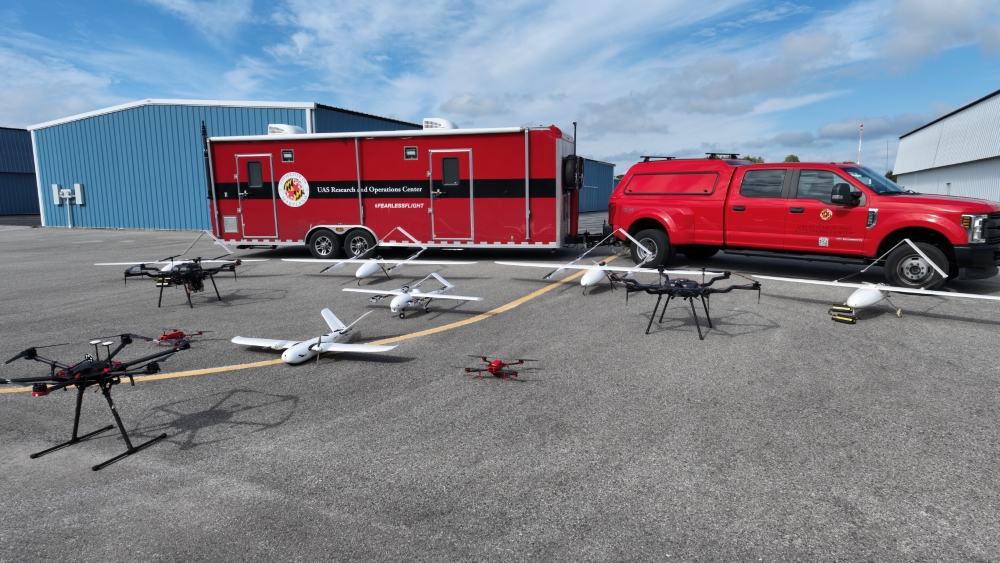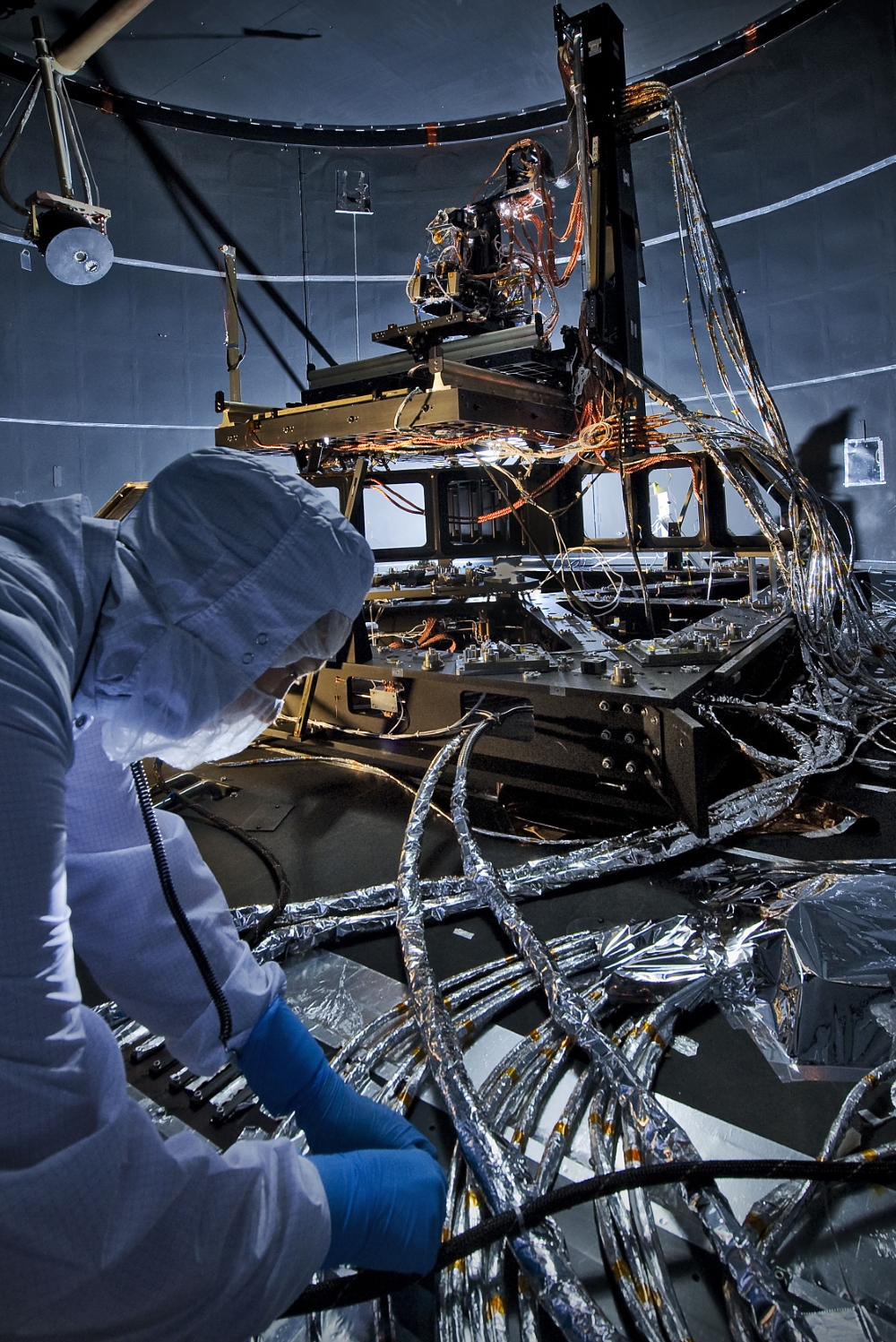Aerospace companies looking to get their operations airborne quickly will find they can easily do so in Maryland. Over 9,000 such companies have a presence in the state, perhaps because it has the highest concentration of aerospace engineers in the country. Pick an aerospace sector from space technology to unmanned aerial vehicles, and chances are an in-state federal research lab, military facility or aerospace company is working today on tomorrow’s cutting-edge systems.
Aerospace is one of Maryland’s top strategic industries, according to Deputy Secretary Ricardo Benn, who oversees the Maryland Department of Commerce’s innovation and growth portfolio, including the Office of Strategic Industries and Entrepreneurship and Office of International Investment and Trade.
“We have some amazing assets, including NASA’s Goddard Space Flight Center [in Greenbelt], where I started my professional career,” says Benn. “It’s one of the most important space facilities in the world for planetary sciences. We have NAVAIR, the Naval Air Systems Command, in St. Mary’s County, and many other facilities that are all focused on different aspects of aerospace.
“Our focus is on ecosystem development,” says Benn. “That means focusing on the companies and suppliers within the state and their challenges and leveraging the tools and capabilities we have to help them grow and expand. And it means courting sources of capital so they can expand.”
Benn recently attended a leading conference of the unmanned vehicle systems industry that was attended by delegations from around the world. “We took a delegation of eight Maryland companies to expose them to those markets,” he relates. “That’s a key mechanism for us — to facilitate domestic connections these companies need as well as international access. Companies in Maryland are part of that global supply chain, so we want to make sure they have the access they are seeking.”
As unmanned aerial systems and their uses become more ubiquitous, aerospace companies and federal agencies have an academic research resource in state for expertise on keeping their flight plans on track. From testing nascent UAS technologies to improving established systems, the UAS Operations and Research Center, part of the Clark School of Engineering at the University of Maryland, is a key part of the state’s aerospace ecosystem.
“National airspace integration, for example, is among the areas we’re working on,” says John Slaughter, director of the Center. “This is taking mature technology, UAS techniques that have been developed elsewhere in the country in less congested airspace, and moving it into Maryland airspace, which is complex. In addition, we work on projects of all kinds involving NASA, Homeland Security, military branches, state agencies and others, as well as private entities that may be involved in research or other innovation involving drones.”
Out of This World
Maryland’s aerospace reach extends well above the ceiling capacity of unmanned aerial vehicles. It can be found on numerous space missions — some with familiar names today and others with mission names that in time will be familiar.
“Maryland’s Goddard Space Flight Center is recognized as one of the premier institutions for aerospace science in the United States and the world,” notes Robert Rashford, president and CEO of Lanham-based Genesis Engineering Solutions, a space technology systems company located near Goddard. “Three notable flagship missions are the Hubble Space Telescope service missions, the James Webb Space Telescope and the Roman Space Telescope with a planned launch in 2026. These three telescope projects, along with the Space Science Institute in Baltimore, have made significant contributions to science both nationally and internationally.”
Among other projects, Genesis Engineering is developing the Single Person Spacecraft, a fully enclosed vehicle designed for orbital maintenance and other out-of-spacecraft missions.

The University of Maryland’s UAS Operations and Research Center in St. Mary’s County works with public- and private-sector entities to advance unmanned aerial vehicles’ efficacy.
Photo courtesy of the UAS Operations and Research Center
In Baltimore County, Rocket Lab USA recently opened a Space Structures Complex to manufacture composite products for spacecraft and rockets. The company designs and manufactures the Electron small orbital launch vehicle for satellites and is developing the large Neutron launch vehicle for constellation deployment. Since its first orbital launch in January 2018, according to the company, the Electron launch vehicle has become the second most frequently launched U.S. rocket annually and has delivered more than 200 satellites to orbit for private and public sector organizations.
In February 2025, X-Bow Systems, a producer of advanced solid rocket motors and defense technologies, opened a new office in Indian Head in Charles County, Maryland, where it began operating in a converted retail complex in 2024. The company is a contractor for the U.S. Navy and is involved in the modernization of the nearby Naval Surface Warfare Center Indian Head base.
Aerospace activity can be found throughout much of Maryland, notes John Slaughter, from the U.S. Army’s Aberdeen Proving Ground in the northeast to St. Mary’s County in the south, a hotbed of military and civil aviation development. It’s where the UAS Operations and Research Center is located, as are NAVAIR, the Patuxent River Naval Air Station and the Maryland Autonomous Technologies Research Innovation and eXploration (MATRIX) Lab operated by the University of Maryland.
“Maryland is packed with expertise in everything from small UAS to the largest air- and spacecraft,” notes Slaughter. “Even more important, its engineers are at the cutting edge of making these systems more and more autonomous. Future-focused companies aspiring to operate in that space will find Maryland an unmatched place to set up shop.”
This Investment Profile was prepared under the auspices of the Maryland Department of Commerce. For more information, visit business.Maryland.gov/aerospace.

